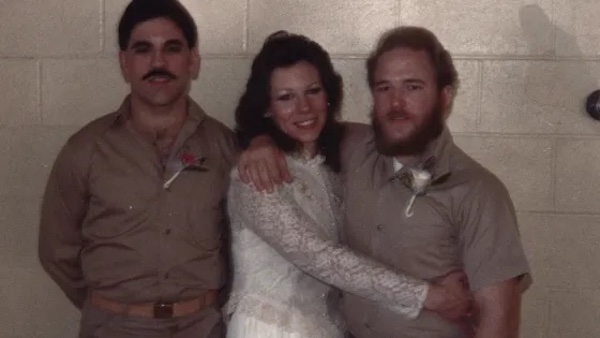Television Review: “The Devil on Trial” — A Demon for a Client?
By Sarah Osman
Despite a slow first half, The Devil on Trial picks up speed and suggests that truth can be more infuriating than fiction.
The Devil on Trial, directed by Chris Holt, streaming on Netflix.

A scene from the documentary The Devil on Trial. Photo: Netflix
The Conjuring Universe has spanned eight films, a comic book series, and propelled renewed fascination with the adventures of Ed and Lorraine Warren, paranormal investigators. The series focuses on the pair’s experiences; they claim to have investigated over 10,000 hauntings/demonic cases. The duo have capitalized on their titillating tales, scaring readers and audiences because of how they recount, in terrifyingly gory details, these morbid encounters. There’s just one problem to this success story: half of what they said they did wasn’t true.
Ed and Lorraine Warren aren’t the sole focus of Netflix’s latest documentary, The Devil on Trial, but they are certainly its key targets. The film concentrates on the one and only time demonic possession was used as a defense trial in a US murder trial. The first half of the doc supplies information to help us understand the real-life court cases. Some of this backstory is interesting, but the sordid tale doesn’t really take off until the second half. The Devil on Trial turns out to be a narrative slow burn that probes a fascinating question: who is more frightening — supernatural entities or the humans who fear them?
In 1980, in Brookfield, Connecticut, 11-year-old David Glatzel was possessed by the devil. Or at least that’s what his mother believed. His sister, Debbie, and her boyfriend, Arne Johnson, moved into their new home and David paid them a visit. And that’s where he met the devil.
Audio of David shrieking, screaming, and cursing at his mother is played. Unfortunately, rather than just rely on the audio and interviews with the Glatzels — which would have been enough — the film also incorporates cheesy reenactments. This is where The Devil on Trial scrapes bottom. The story is captivating enough on its own; there is no need for amateur theatrics.

A scene from the documentary The Devil on Trial. Photo: Netflix
Unsure of what to do, David’s mother, Judy, called in Ed and Lorraine Warren, who determined that David was, indeed, possessed. Curiously, David listened in as the Warrens described demonic behavior: shrieking, screaming, and cursing. A few minutes later, that is just the behavior David mimicked. His mother missed this causal link. The Warrens convince the woman that an exorcism is needed. During the ceremony, Johnson yelled for the devil to take him instead, which apparently he does.
This turn of events leads to the trial in The Devil on Trial. Johnson, now claiming to be possessed by the devil, went out and stabbed his friend Alan Bono four times. And Johnson did it in front of his own sisters, who confirmed this in a police statement. Somehow the Warrens convinced Johnson to plead demonic possession, and a reluctant and gullible lawyer agreed to make the argument.
At this point the documentary goes from a run-of-the-mill “possession” story to a fascinating fusion of court case and dysfunctional family drama. A journalist covering the trial talks about how many interested in the case sent in their own supernatural advice. The lawyer explains how the Warrens convinced him that the defense made sense (that audio comes into play again). The eldest Glatzel brother, Carl, spills the family tea, explaining that Johnson suspected Debbie was having an affair with Alan Bono. The Glatzel patriarch never bought into the idea that David was possessed. The revelations — embarrassing, hellacious, etc. — come fast and furious in the second half.
The documentary’s conclusion is as shocking as it is depressing. Let’s just say that the “devil made me do it” defense has a snowball’s chance in hell.
Sarah Mina Osman is a writer residing in Wilmington, NC. In addition to writing for the Arts Fuse, she has written for Watercooler HQ, Huffington Post, HelloGiggles, Young Hollywood, and Matador Network, among other sites. Her work was included in the anthology Fury: Women’s Lived Experiences in the Trump Era. She is currently a first year fiction MFA candidate at the University of North Carolina Wilmington. When she’s not writing, she’s dancing, watching movies, traveling, or eating. She has a deep appreciation for sloths and tacos. You can keep up with her on Twitter and Instagram: @SarahMinaOsman
Tagged: Ed and Lorraine Warren, Netflix, paranormal investigators, The Conjuring Universe
